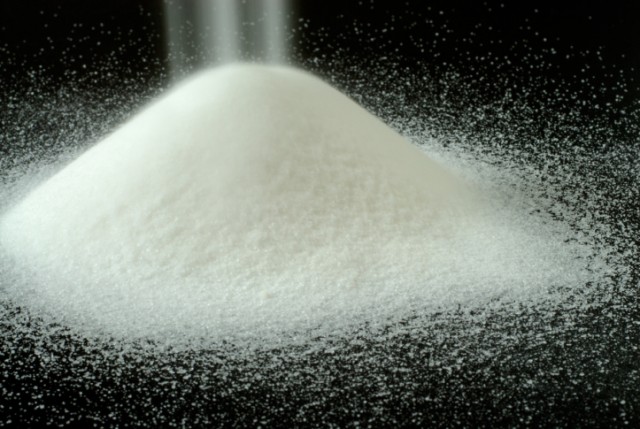Every day I teach people how to cook with nutrient-dense foods and explain the risks associated with eating a processed diet. I think it would surprise many of my students and readers that I am a recovering addict—a sugar addict. There was a time when I couldn’t make it through a day without my sugar fix, whether it was ice cream, candy, or bakery sweets. My need for sugar was even more intense when I was stressed out or feeling overwhelmed. When I would eat a brownie, I could feel my whole body relax. But all this excess sugar took a toll on my physical and mental health. It was keeping me from being the person I wanted to be.
I have a feeling many of you will relate to this. While others may be in denial—how can sugar be classified as addictive? And even if it is, what’s the big deal? Let me give you a taste:
Sugar is completely non-nutritive, terribly acid-forming to our system, pro-inflammatory, fuels yeast, fungus, cancer, contributes to depression, and raises triglycerides and cholesterol. If that doesn’t raise an eyebrow, sugar also breaks down the collagen in your skin and ages you more quickly than you need to.
Worst of all, sugar is just as addictive as cocaine.
If you’re one of those fortunate people that can consume sugar in moderation, e.g. after dinner on Friday and Saturday, then you don’t have anything to worry about. But for the majority of this country, for whom sixteen percent of their daily calories comes from sugar or its derivatives—we need to make a change. Here are some of the strategies that helped me kick the sugar habit.
1. Educate yourself about the potential dangers of sugar.
You will be more motivated to let go of sugar once you really understand and accept the negative effects it has on your health. A few resources include, the book Sugar Blues by William Dufty, the NY Times Magazine article Is Sugar Toxic? by Gary Taubes, and the video Sugar: The Bitter Truth by Dr. Robert Lustig.
2. Identify and understand your sugar triggers.
These can be stress, intoxication, boredom, hunger, feeling tired, or a post-lunch dip in energy. Commit to a plan for other outlets to deal with these triggers in order to break this habitual behavior. For example, if you know that every day at 3:00 p.m. you look for candy in the breakroom, tell yourself you will go for a walk or drink a hot tea instead. If you’re concerned you’ll be hungry, plan for a satisfying, non-sweet snack, such as hummus with raw vegetables or plain yogurt with almonds and coconut.
3. Eat well.
It may seem obvious, but when the body is well-nourished, it doesn’t seek empty calories. It is also important to eat enough at breakfast and lunch so that you’re not constantly craving food.
4. Start your day with something savory.
You are more likely to trigger sugar cravings during the day if you eat something sweet for breakfast. Instead, choose the opposite, such as a vegetable omelet or bowl of soup.
5. Choose nutritive forms of sweet.
We still need to satisfy the body’s desire for sweet, but we can do that with more nutrient-dense “sweet” foods such as sweet potatoes, roasted root vegetables, even cooked onions. Other foods you can use to mimic sweetness without adding sugar are spices like cinnamon, cardamom, and nutmeg; vanilla powder; unrefined coconut oil (I cook pancakes and French toast with coconut oil and sauté Swiss chard and kale with it); and almond milk, particularly in coffee and smoothies. If you struggle with sugar cravings, be careful about consuming excess fresh fruit.
6. Commit to three days sugar-free.
I normally recommend incorporating dietary changes gradually, but sugar cravings are best tackled cold turkey. Many people find that after three days of no sugar, the cravings stop completely. Beware of hidden sources of sugar in foods such as power bars, sauces and salad dressings, cereal, tomato sauce, and non-dairy milks. If you’re not sure, read your labels!
7. Don’t switch to artificial sweeteners.
Don’t make the mistake of swapping one poison for another. The only things more acid-forming than sugar are artificial sweeteners such as Splenda and Aspartame. Not only that, studies show that artificial sweeteners promote weight gain and, you guessed it, more sugar cravings.
8. Sugar is sugar.
Although it may be tempting to load up on alternative, “natural” sweeteners such as maple syrup or coconut palm sugar which may be less refined, boast a few more nutrients than processed sugar, and may be slightly less acid-forming, they will still fuel any addiction you might have to sugar. Stevia, a naturally sweet, carb-free herb, seems to be one of the few natural sweeteners that doesn’t trigger cravings.
9. Remove all sweets from the house.
Do a full clean-out – no mercy here. If you are uncomfortable throwing food away give it away to a neighbor or co-worker, but do not rely on your willpower.
10. Try an acupuncture addiction treatment.
If you feel like you need extra support, acupuncture can be effective in two ways. It helps to naturally restore the homeostatic state in the body, thus decreasing cravings for sugar that simply mask deeper issues. It also can work on the psycho-emotional aspect of addiction—in this case, sugar—by creating a sense of well-being without the need to fill any voids with sugar or other temporary mood enhancers, like alcohol, cigarettes, etc.
If you have struggled with sugar cravings or have suggestions about dealing with addictive foods, please share here. We can all learn so much from each other!
Pamela Salzman is a certified holistic health counselor. She shares her approach to nutrition through her natural foods cooking classes and website, a resource for her healthful, family-friendly recipes and nutrition tips. She was recently profiled in Elle Magazine. Please visit Pamela’s website or Facebook page for more information and great resources.












